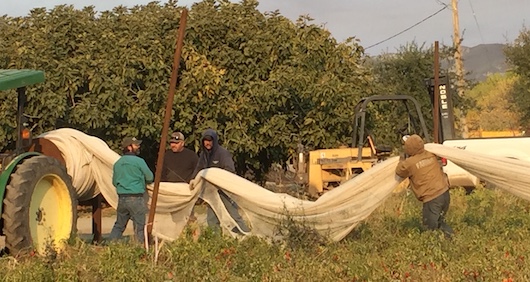
The monumental tragedy of the Paradise fire is hard to comprehend. A community swept away with a wall of flames driven by powerful winds offered little time to escape. The reality of fire consuming an entire town in a morning and the personal terror and loss is a sobering reminder of our interdependence and proximity to profound potential for change driven by a flame, or a gust, or a chance mistake. A brief spark can alter the trajectory of lives or extinguish the same in an unimaginable fury. We turn our hearts to those who are suffering loss.
Some of you may have experienced the Oakland fire in 1991, when the reality of wildfire in an urban area leveled homes and the places of personal sanctuary. The lessons learned from such a fire when 25 lives and over 3000 homes were lost can fade as the regular rhythm of life turns to other concerns. We are linked together in the awareness of responsibility to one another to use caution, heed warnings and balance the need for shade and beauty with the potential for real danger. We are linked together, interdependent, and at the same time relying upon and trusting the good sense of our neighbors.
This summer has been filled with fire, smoke and stories of tragedies requiring us to rethink strategies to make places more fire safe. As the smoke of this Camp Fire curled over our hills to the east, we realized it could have as easily been the Capay Valley on fire. We are spending some time this week evaluating and planning together with our neighbors for our collective safety.
We had our first fall frost this past Saturday. Tomatoes are finished. Eggplant will have a last picking. Asparagus has been chopped and fertilized for its February awakening. Our winter squash has been collected and stored in bins. Walnuts have been swept up and are now being shelled. Pomegranates are safely in a cooler. The last sunflowers and beans are trickling in – enjoy them for a brief time, for summer is wound completely down and we are on to finishing early winter work.
CSA members can see the winter season coming in the boxes they open each week. Hardy greens will be sweeter for the frost. The cold creates sweetness. Potatoes, cabbage, carrots and beets will all change their flavor as we get colder. Crops simply grow more slowly and some of the best flavor is found in the winter season.
Our fall push to have fields planted with green-growing cover crops, capturing the low soft light of the season, is nearly complete. Oats, barley, vetch, clover, and bell beans are our favorites for capturing carbon and nitrogen all winter to turn into food for our soil. Many of these covers have emerged and will blanket and protect the soil soon. By covering the soil, we are not only feeding it, but also planning for the unusual – unexpected heavy rains that can erode landscapes and flood fields. Heavy rains may not come, just as the fire may be elsewhere, but it is clear that planning is needed to prepare for the unexpected event.
For the farm, our most resilient plan is to allow plants to absorb sunlight, keep living roots in the soil and protect the fragile web of life under our feet. A cover allows water to flow into the soil and not off the field – money in the bank! A cover allows plants to have association with soil micro-life and sequester more energy in tissue and root. A cover crop allows our nitrifying bacteria to have an association with a legume rootlet and gather the nitrogen that the plant breathes in and sock it away in the soil – cheap fertilizer. A cover crop will provide food for our sheep. A cover crop will regenerate itself as we harvest its generosity of seed and store it for the next year.
We are also making fields ready to plant our winter grains. Our strategy with regard to the fall planting is to wait and see if storms are predicted, evaluate the chance of rain, and plant seed deep enough so that the moisture of the rain will sustain them. If not planted deep enough, a small storm may germinate the seeds without enough moisture to sustain the crop.
Sometimes intervention with nature’s processes is at the heart of an abundant and resilient future. We may need to invest in our common landscapes – our forests – where thinning and infrequent fires may help to prevent the tragedy of the big out-of-control fire. We are in a relationship with a natural world where we need to invest in the long-term wellbeing of the system. It is not a passive relationship, but an active understanding of how ecosystems work, that will help to mitigate the potential for loss or even tragedy.
Human beings may be essential ‘keystone’ species that will need to do things differently in how we relate to the natural world around us and see things differently. Our understanding of many of the systems, from soil to forest, may need to change and be less taken for granted and require an investment of resources and preventative enhancement. This will become the responsibility of the landholder working with public investment in a new look at our landscapes. It may be easier and more cost effective to work on prevention and management than to deal with the tragedy of powers that dwarf our attempts to fight the outcomes of neglected investment.
–Paul Muller

It was only a few months ago when we posted a photo of a large crew installing shade cloth above our pepper field. Here we are now taking the shade cloth down and rolling it up for next time (with the help of a tractor).
